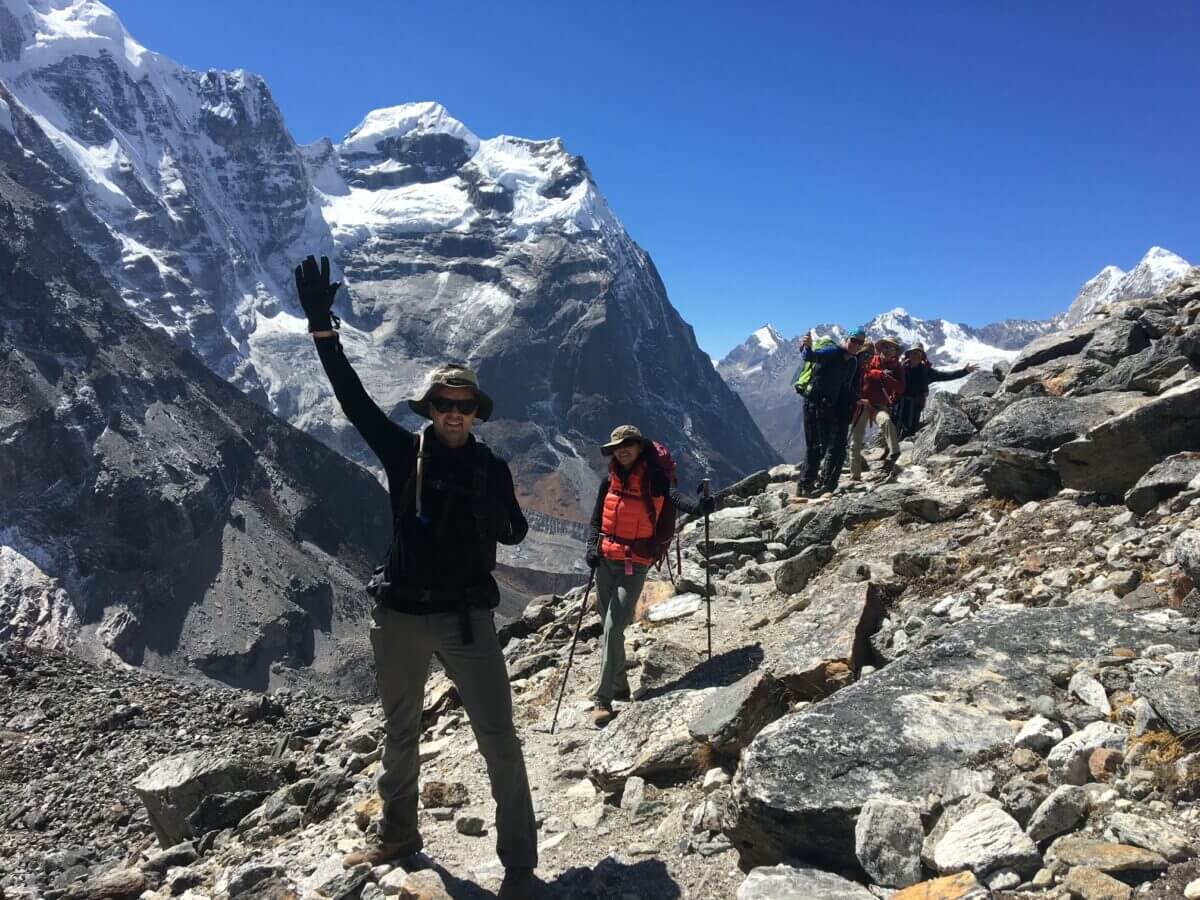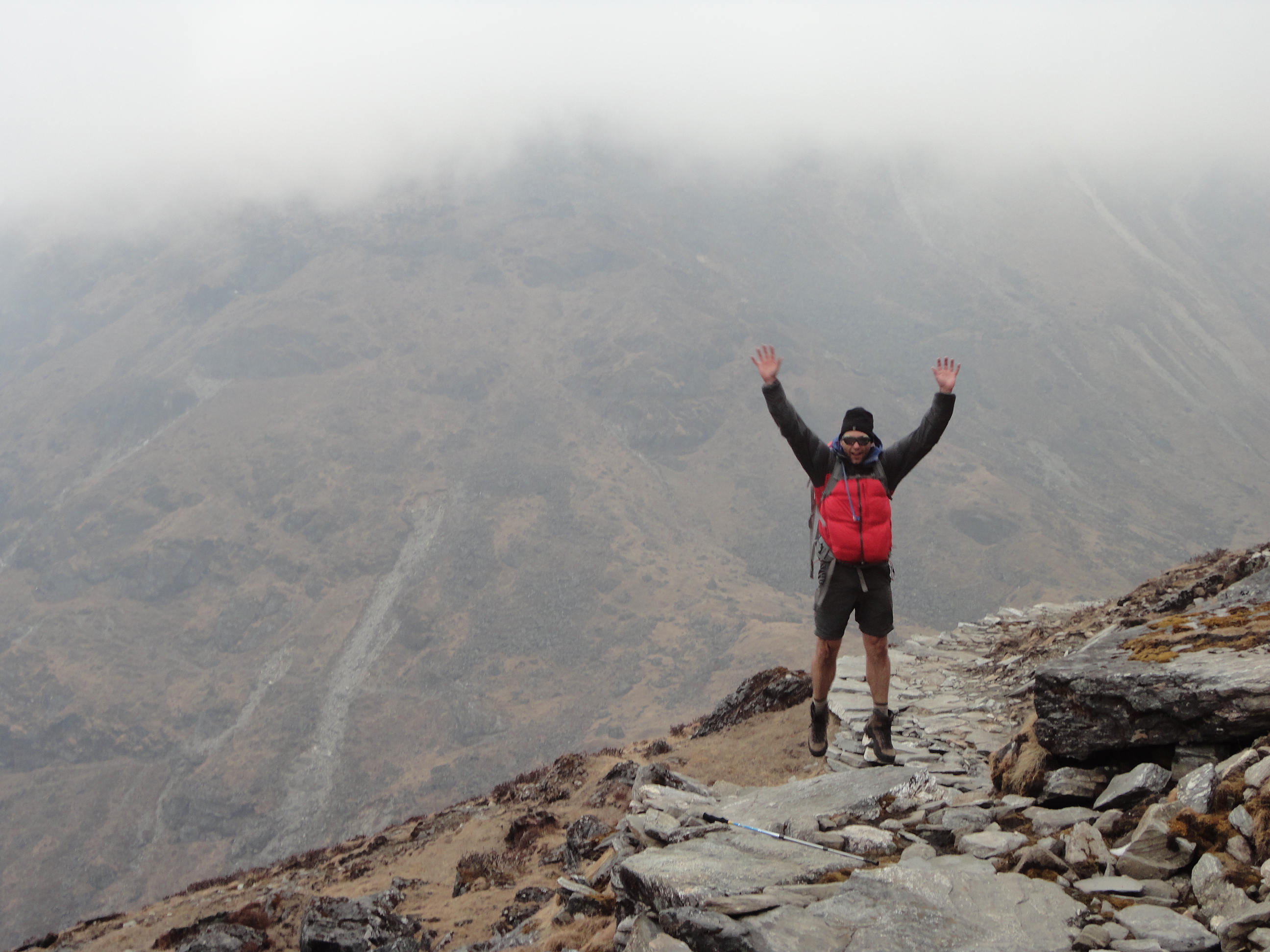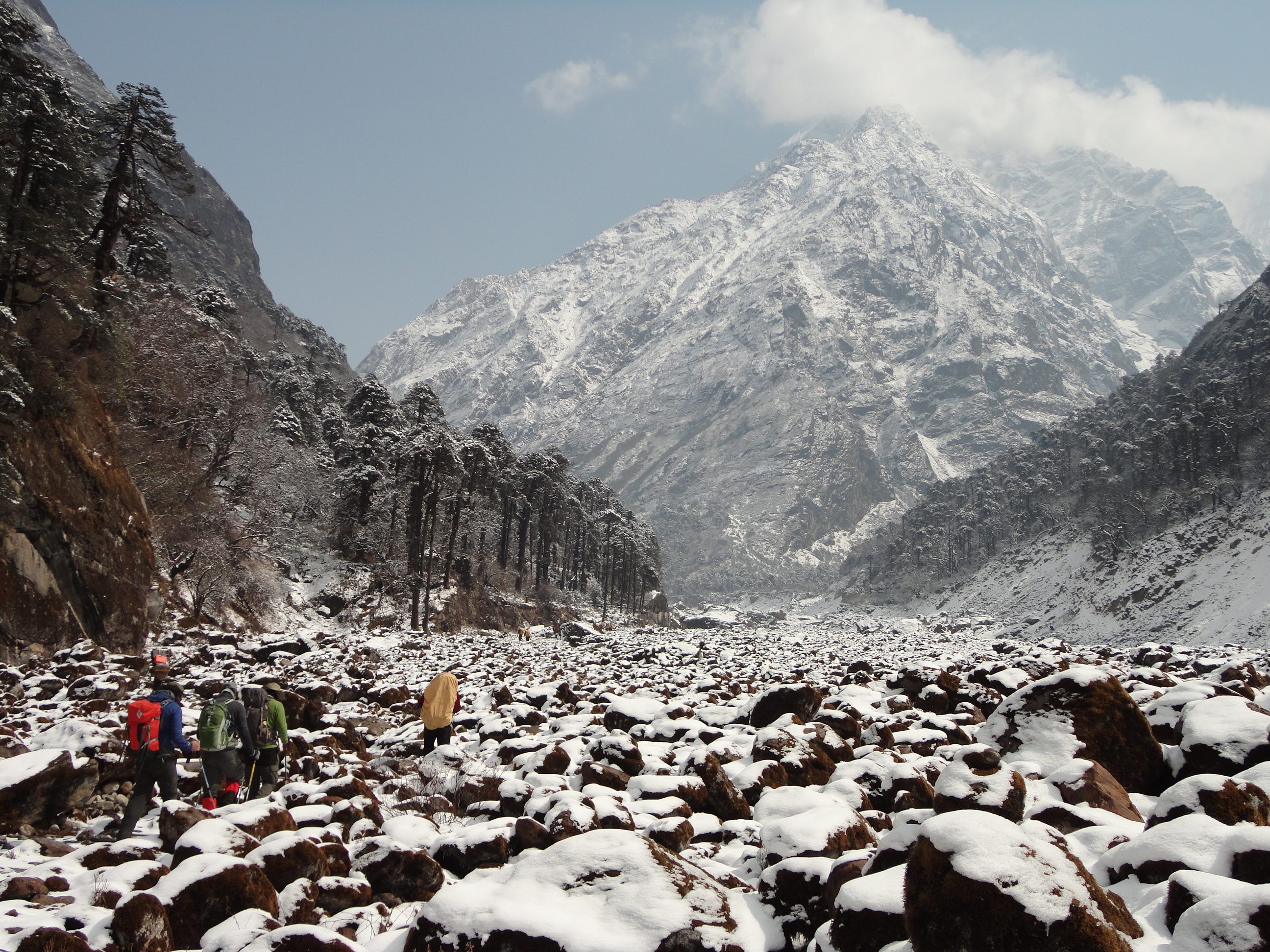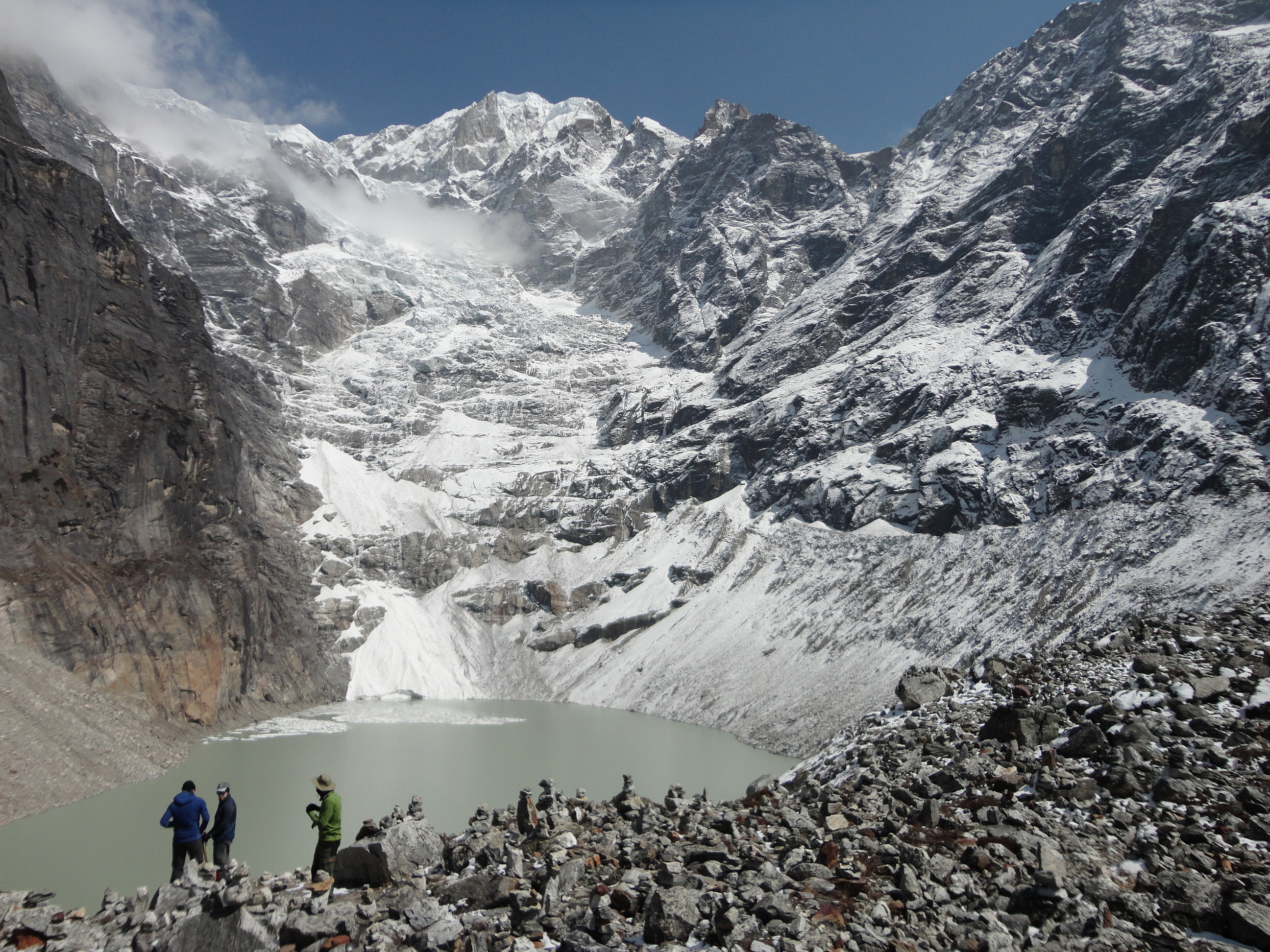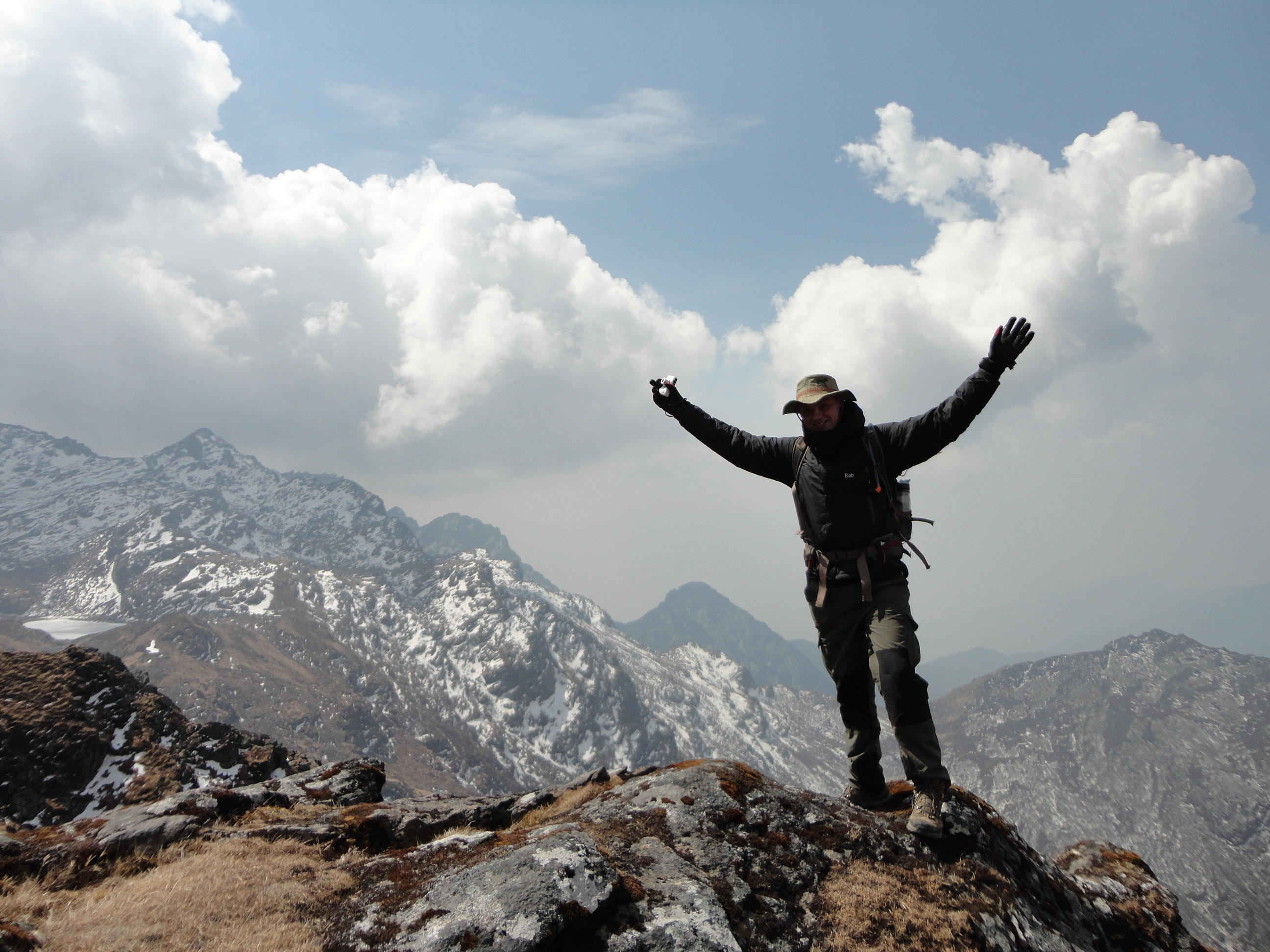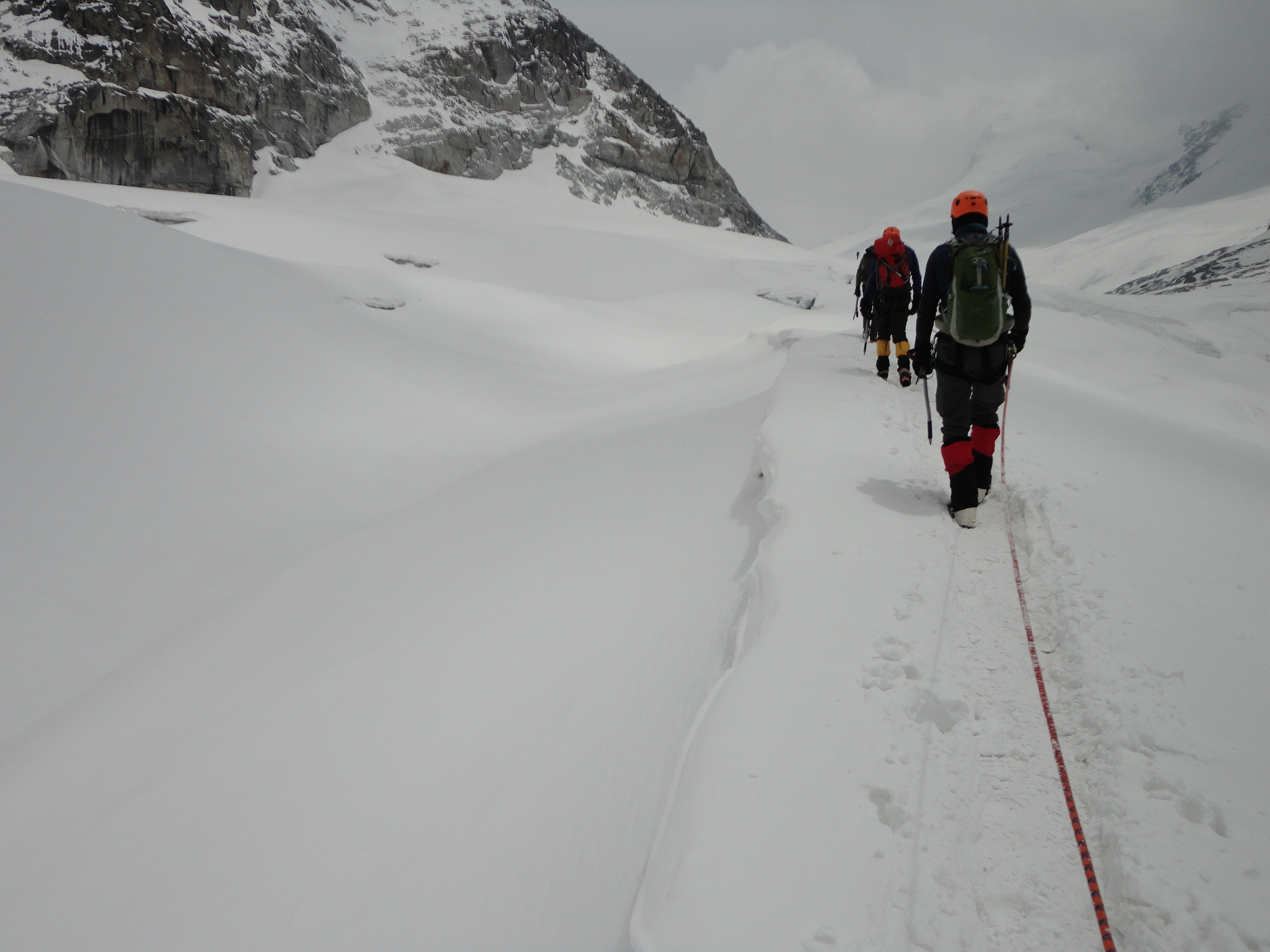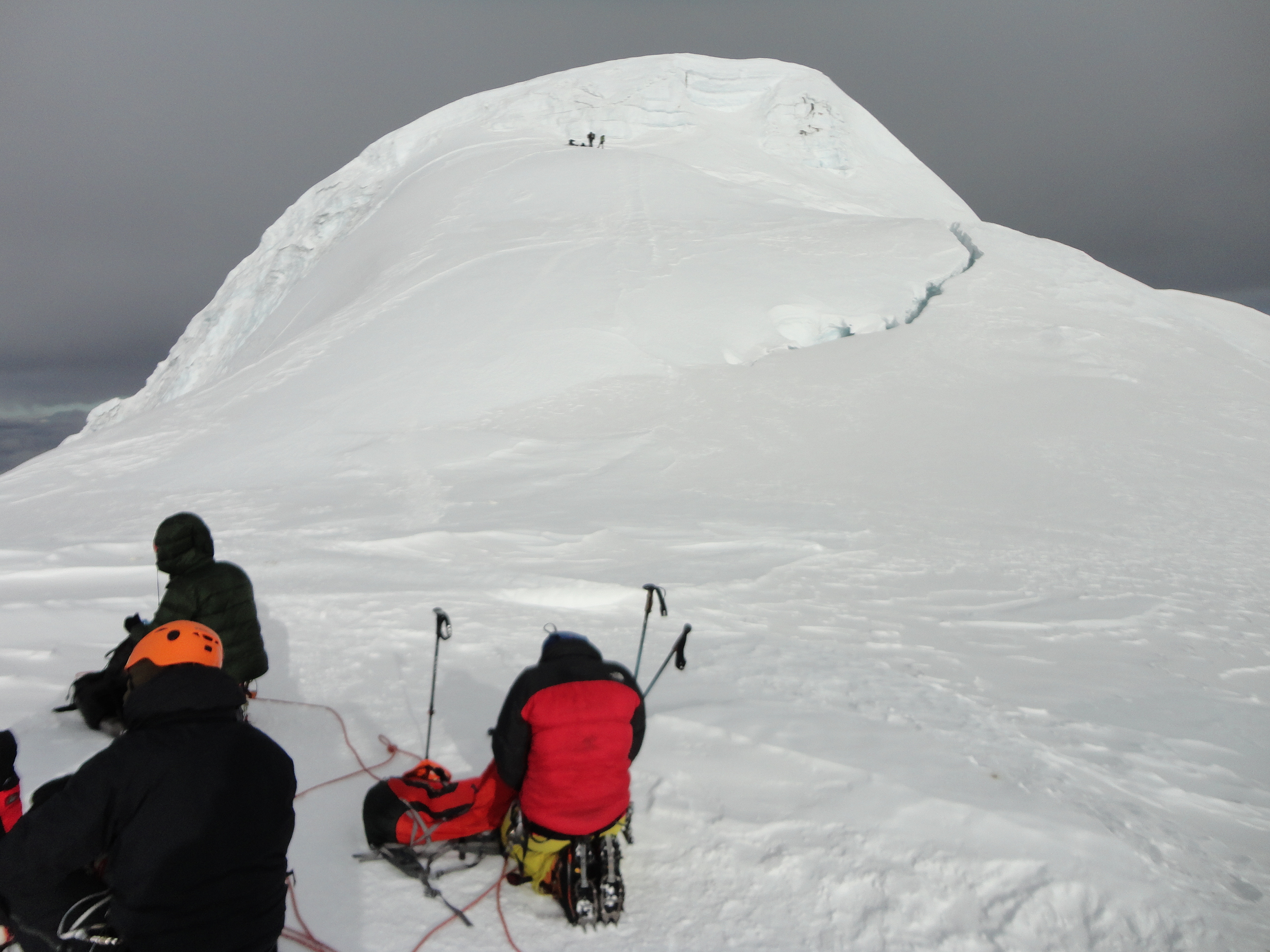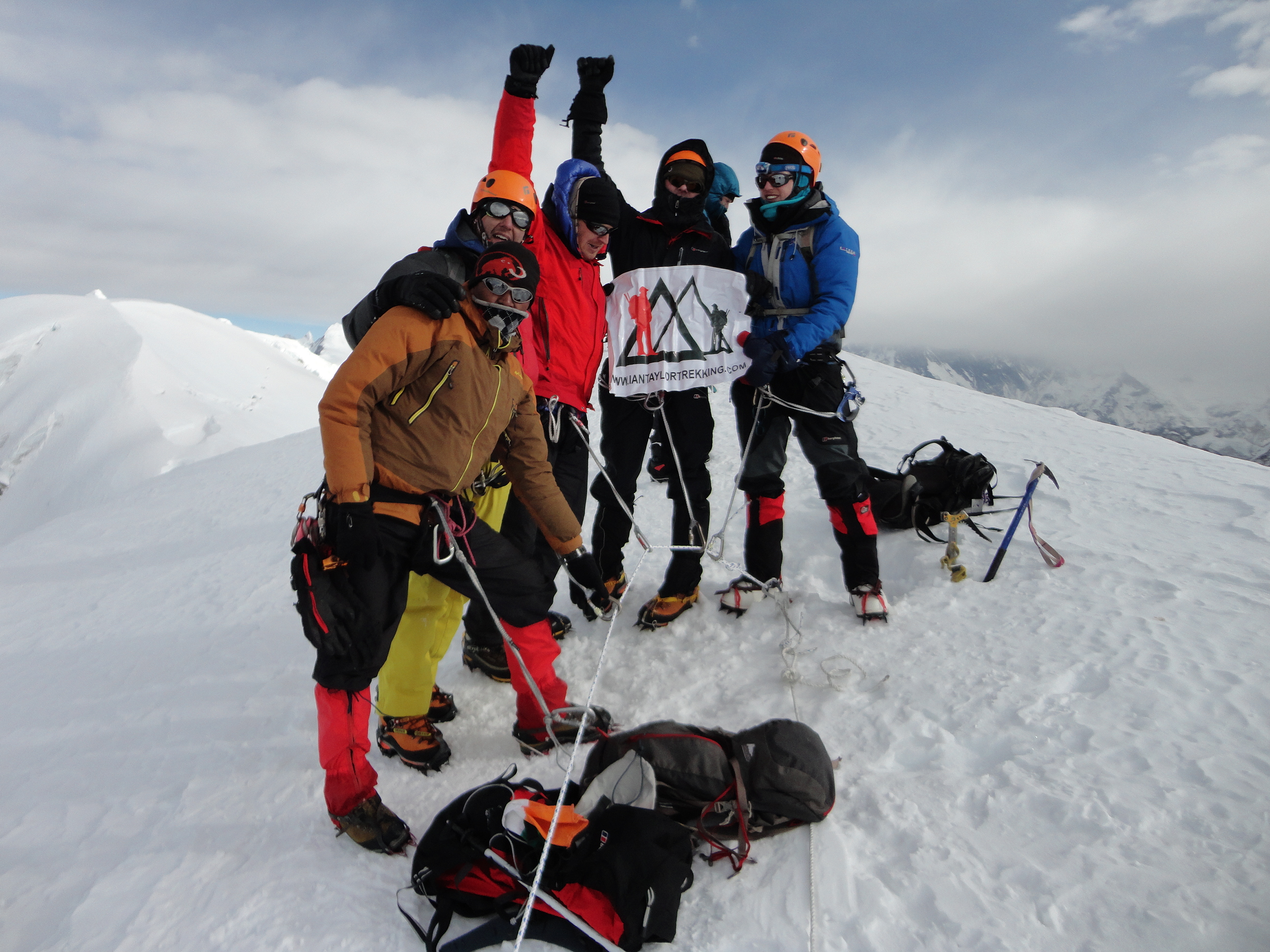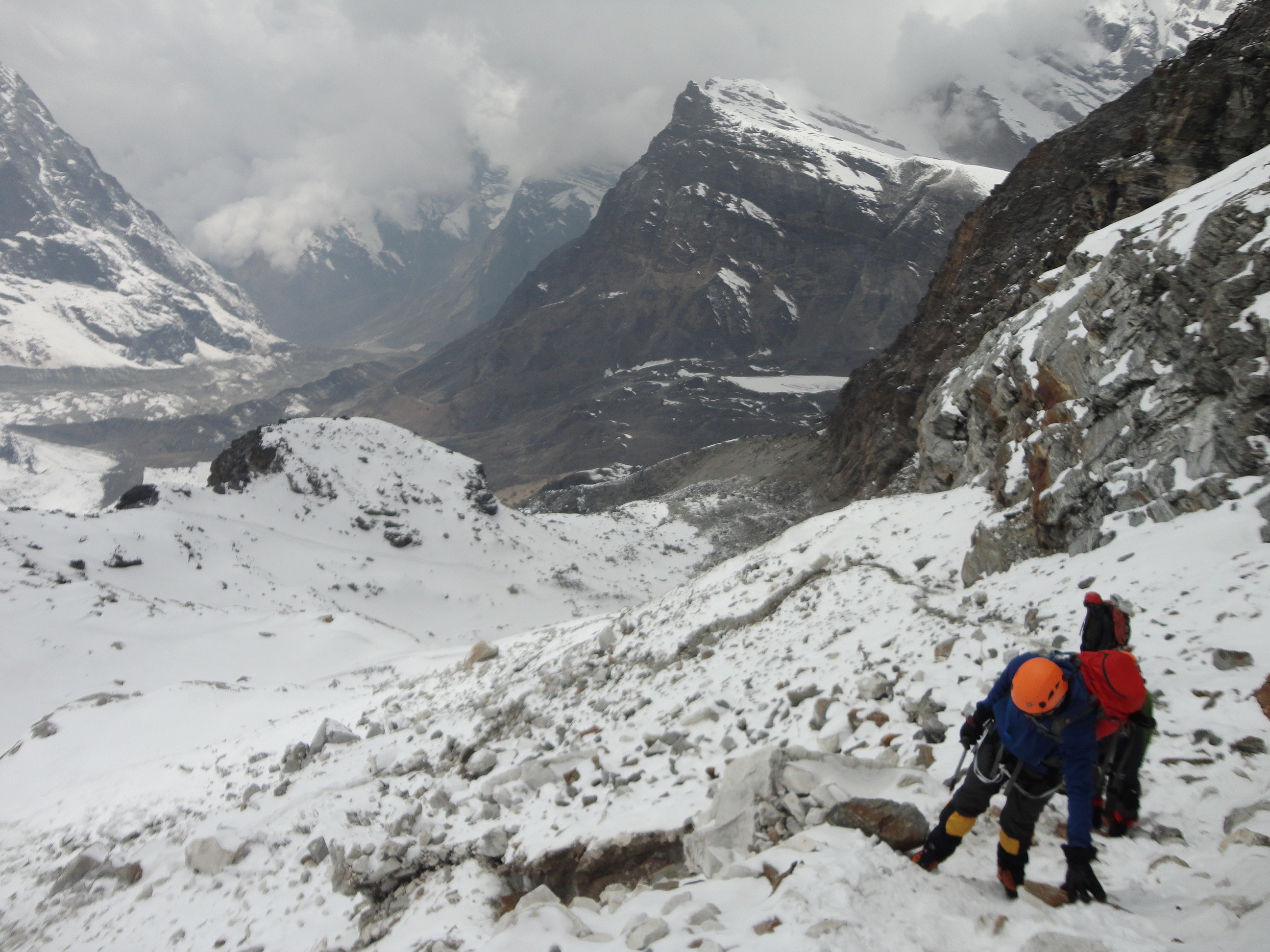After years of leading Mera Peak trips in the Himalayas, here are our Top 10 Tips for Climbing Mera Peak. If you pick our itinerary, with additional acclimatization, you will not be disappointed. Our itinerary follows an ‘off the beaten path’ route, where you will get to trek through the less traveled villages in the region. Check out our upcoming trips.
More Acclimatization on Mera Peak
Acclimatization is everything on a Mera Peak Expedition. Our itinerary has three nights in Khare 16,240 feet, two nights at Mera Peak Base Camp 17,550 feet before moving to Mera Peak High Camp 19,357 feet. This gives our team the best acclimatization, preparation and flexibility for Mera Peak summits.
Climb With Experts
We have 15 years experience working on Mera Peak, and have run over 50 trips to Mera Peak. Our itinerary is specifically designed and tested for your safety. CLICK HERE for some reviews and check out our Mera Peak page.
Ian has personally climbed Mount Everest, Island Peak 25 times, and Mera Peak 6 times. Ian and our team are available to help you in your preparation. We have also grouped together all our most important pages on Mera Peak in one location to help you get the information you need.
If you sign up to one of trips we send you a 40 trip dossier with itemized kit list. We are also available 5 days a week helping you prepare for the adventure. If you are thinking of taking on the Mera Peak adventure, then feel free to get in touch today.
1). Be Comfortable Camping
On the Mera Peak trip, you will be sleeping in tents out in the elements for a portion of the time. Our trips spend some nights in the local tea houses and some nights in tents. This will help you to prepare for the nights on the mountain.
You will need to be prepared to sleep multiple nights in a row in the great outdoors! The weather can vary drastically, with a wide range of conditions.
You need to be comfortable with setting up tents, being capable and proficient at managing your camp craft, and be able to maintain a good level of hygiene in a camping environment.
2). Have the Right Clothing, Gear and Equipment
Mera Peak can throw out a mix of weather, at any time of the year. The weather is never guaranteed to be stable, so you need to be experienced and ready for a range of weather conditions.
This means that you need to make sure that you have the right mountaineering boots and gear required for this cold and hostile environment. CLICK HERE for our Mera Peak packing video.
There is no one size fits all when it comes to gear, so we think that the best option is to seek out our advice on an individual basis to make sure you have the right gear for the time of year you plan on climbing Mera Peak.
CONTACT US or call us, as we are happy to cover all aspects of the equipment and kit needed for climbing Mera Peak.
3). When Should you Climb Mera Peak
We recommend climbing Mera Peak in March, April, late September, October and November. We find that when we climb on Mera Peak, generally the best months are March, October and November.
If you decide to climb in March, early April or late October into November, you need to be ready for colder conditions. It can snow in any of these months. Therefore, you will need to adjust your gear and equipment to suit the colder weather conditions you will encounter on the Mera Peak climb.
4). Specific Physical Conditioning is Needed
Trekking into Mera Peak on the route we use is very strenuous. There are lots of steps up and down and the trail is very demanding. CONTACT US for pictures and more information. When you climb higher on Mera Peak, you are climbing into the lower realm of the death zone at 5,500m/ 18,044 feet.
Above this height, nothing can survive. Your digestive system is starting to shut down and your body is shutting down. In saying this, you can adapt enough to the low levels of oxygen, however, you need the right acclimatization schedule and to have done the right training.
Climbing Mera Peak requires excellent physical conditioning and you need to be training months in advance of your climb. You will have a long and challenging trek into Khare 4,950m/ 16,240 feet and Mera Peak Base Camp 5,350m/ 17,552 feet, which will require you to have come with a lot of previous hiking experience.
Our summit day is on day fourteen, therefore, we have excellent acclimatization. You need to be training with a backpack on, out in the hills if possible, building from 3 to 6 hours of hiking up and down hills.
In addition, you should be building carrying from 6kg to 15 kgs (13lbs to 33lbs) of weight in your bag. You should also be out doing multi-day hiking to prepare your body for day after day of strenuous activity.
All of this should be supplemented with four to five days a week of gym work. You will need to build your strength and endurance to be able to trek for days on end. If you sign up to one of our Mera Peak climbs, then we will be available to you to help you prepare fully for the climb.
5). Pick the Right Itinerary
Have a look at our itinerary. We have 13 days acclimatization before we head up to high camp at 5,800m/ 19,028 feet and onto the summit at 6,476m/ 21,246 feet. Do not under estimate the acclimatization schedule.
Many teams on Mera Peak are skipping Base Camp, and this is not a good plan. Yes, you can save money by cutting out days and you will see a range of prices for the trip. However, this is not always going to be the best decision for your safety or for your chance of success on the climb.
Make sure you choose a quality acclimatization schedule. You want an itinerary that includes 3 nights in Khare at 4,950m/ 16,240 feet, with quality training provided before moving higher.
We also have additional days in reserve in case the weather is not suitable for the summit day. All these elements give you the best possible chance at making a safe and successful summit of Mera Peak. We have the team and schedule in place to make this happen.
6). Have Previous Altitude Experience
Don’t try to attempt climbing Mera Peak as your first altitude or mountaineering experience. You need to know how your body reacts at 5,000m/ 17,000 feet, before going to higher extreme altitudes. Have you climbed Kilimanjaro?
We recommend as much hiking, trekking and multi-day altitude experience as possible before taking on this challenge. Your previous experience will help you prepare and understand how your body adapts to low oxygen environments.
Also, having previous experience will help you understand the gear, clothing and you will be more comfortable in this wilderness environment. Only by having this knowledge and experience should you consider tackling higher altitudes and climbing Mera Peak.
7). Manage Your Personal Hygiene and Health
As you will be in a wilderness region and away from real medical care, you need to bring your own personal medical kit along with antibiotics and any medicines you may need.
You will be out in the wilderness for days on end and possibly running into very few people until arriving in villages like Khote, Tangnang and Khare. You will need to keep your hands, feet and body clean on the journey. Also, always remember to use hand sanitizer at all times.
We also recommend that you use a nail brush to keep your nails clean and have nail clippers. You need to have factor 50 sun cream and do not get sun burned on the trip. Managing your personal hygiene correctly can be the difference between success and failure on a long wilderness trip.
Having previous camping and wilderness experience will also help you on the journey to Climb Mera Peak In Nepal. We also recommend you talk to us about this element of the trip and how best to manage yourself in a wilderness camping environment.
8). Think About Additional Winter Skills Training
You will be attached to other climbers, walking Alpine style in unison on this glacier route up the summit. The route will be crossing a glacier with crevasse fields.
You will be managing your breathing and temperature in a low oxygen environment, so if you are proficient in using crampons, harness, and an ice axe before arriving to climb Mera Peak.
Having this experience will give you additional experience and confidence going to the summit. We have training courses in Scotland but there are a range of other regions for training around the world. We can help you get this additional training that will be very useful for your Mera Peak climb.
9). Break in Your Trekking and Mountaineering Boots
Having the right footwear is vital to success. Having the wrong footwear could ruin your trip. You will need both trekking boots and mountaineering boots for a Mera Peak ascent.
They will both need to be worn in before you start your journey to Mera Peak. Likewise, you need to make sure you are training with your mountaineering boots on as they will use different muscles and are heavier then your trekking boots. Many times we see people with poor quality mountaineering boots on Mera peak.
Generally, this will lead to people being airlifted with frost bite off Mera Peak. This should never happen. Make sure you have the right footwear. Do make the extra effort to train with your mountaineering boots. It will pay off when you are on the mountain.
10). Have a Qualified Climbing Guide
There are a lot of companies out there who offer the Mera Peak climbs, many of which outsource their guiding services. Therefore, they just find whoever they can to lead your trips.
They will likely also have limited climbing experience, are not able to fix ropes or know how to manage people at high altitude. You need to make sure you have a western guide or climbing Sherpa who can fix ropes, manage training in Khare, pace the team and bring you safely up and down Mera Peak. We don’t outsource any of our Mera Peak climbs.
We bring our own ropes up the mountain and fix them on the final summit pitch. Also, we use a high camp at 5,800m/ 19,028 feet, which gives you the best possible chance at a safe and successful climb on Mera Peak.
We have been leading climbs on Mera peak for 8 years now. Experience is everything on these big mountains.
Top 10 Tips for Climbing Mera Peak
We hope you found this information useful. If you are interested in a Mera Peak climb, or would like some more information, please feel free to get in touch today!

